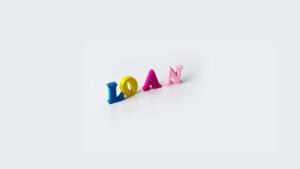
Starting a custom web development project is an exciting step, whether you’re a homeowner looking to create a personal website or a business owner ready to build a digital storefront. Custom web development offers a world of possibilities to design a website that aligns perfectly with your needs, tastes, and goals. But before diving in, there are a few essential things you should know to ensure that your project runs smoothly and delivers the results you’re looking for.
In this article, we’ll walk you through must-know tips that will help you navigate the process with confidence and avoid common pitfalls.
1. Clearly Define Your Goals
The first and most crucial step in any custom web development project is defining your goals. What do you want your website to achieve? Are you aiming to showcase your portfolio, run an online store, or simply create a blog for your personal experiences? Knowing what you want your website to do will give the development team a clear direction to work toward.
Before reaching out to a web developer, ask yourself:
-
What do I want users to do when they visit my site?
-
Do I need specific features (e.g., contact forms, online booking, e-commerce functionality)?
-
Who is my target audience?
The clearer your goals, the smoother the entire development process will be.
2. Understand the Importance of Design
When it comes to custom web development, design is more than just aesthetics—it’s also about user experience (UX). The design of your website plays a significant role in how easy it is for visitors to navigate, find information, and complete actions like making a purchase or signing up for a newsletter.
Make sure to communicate your design preferences clearly to your developer. Do you prefer a clean, minimalist look or something more vibrant and interactive? Provide examples of websites you like and note what features you want to incorporate into your own site. A great design should also be responsive, meaning it should look great and function well across all devices—desktops, tablets, and smartphones.
3. Choose the Right Development Team
Choosing the right team for your custom web development project is critical. A skilled developer can turn your ideas into reality, while the wrong choice can lead to frustration and subpar results. When selecting a development team, consider these factors:
-
Experience: Look for developers who have experience in building websites similar to yours. For example, if you need an e-commerce site, choose developers who have built online stores.
-
Portfolio: Review their previous work. Do they have a portfolio of well-executed websites? This will give you an idea of their capabilities.
-
Communication: A successful project requires strong communication. Ensure that the developer is easy to communicate with and responsive to your questions or concerns.
-
Reviews: Check reviews or testimonials from previous clients to get an understanding of their working style and customer satisfaction.
Take your time when choosing a web developer, as this decision will significantly impact the success of your project.
4. Set a Realistic Budget
Web development can be an investment, and it’s important to establish a clear budget before you start the project. The cost of custom web development depends on several factors, such as the complexity of the website, the features required, and the developer’s experience level.
When discussing your project with potential developers, ask for a detailed estimate that outlines the scope of work, the expected timeline, and the associated costs. Keep in mind that some developers may charge hourly, while others may offer a flat rate for the entire project.
It’s also wise to set aside a contingency fund in case unexpected costs arise during the development process. By setting a realistic budget and understanding what’s included in the cost, you’ll avoid surprises down the line.
5. Prioritize SEO from the Start
Search engine optimization (SEO) is a crucial aspect of web development that should be considered from the very beginning of your project. Even the most beautiful website will struggle to attract visitors if it’s not optimized for search engines.
Work with your developer to ensure that SEO best practices are incorporated into the design and development process. This includes optimizing site speed, making sure the site is mobile-friendly, using proper heading tags, and implementing clean URL structures.
Additionally, think about the content you’ll need for your website. Make sure it’s high-quality, relevant, and optimized with the right keywords to help search engines understand what your website is about.
If you’re not familiar with SEO, it’s worth working with an SEO expert to ensure that your site is fully optimized from the start.
6. Plan for Scalability
When planning your custom web development project, it’s important to consider the future. While your website may start small, you may want to expand it as your needs evolve. Whether it’s adding new pages, features, or increasing your hosting capacity, it’s essential to plan for scalability.
Talk to your developer about building your website with growth in mind. For example, a CMS (content management system) like WordPress can make it easier to add new content or features without needing to rework the entire site.
By planning for scalability, you’ll avoid the need for costly redesigns or overhauls as your website grows.
7. Ensure Security Measures Are in Place
Website security is more important than ever, especially if you’re collecting user data or running an e-commerce store. A breach in security can damage your reputation and cause serious financial loss.
Make sure your developer is taking security seriously and implementing necessary measures, such as:
-
SSL certificates (for secure data transmission)
-
Regular software updates
-
Secure payment gateways (if running an online store)
-
Regular backups to prevent data loss
Additionally, consider using a web security service or plugin that offers protection against hackers and malware.
8. Test Before Launching
Before launching your custom website, thorough testing is crucial. Testing ensures that your site works properly across all devices and browsers. Make sure to check the following:
-
User interface (UI): Does it look and function as expected?
-
Site speed: Is your site loading quickly? Slow load times can drive users away.
-
Mobile responsiveness: Does your site look and work well on mobile devices?
-
Broken links: Are all the links on your site functioning properly?
By thoroughly testing your site, you can identify and fix any issues before going live, giving your visitors a smooth and enjoyable experience.
Conclusion
A custom web development project is an exciting opportunity to create a website that reflects your personal style and meets your specific needs. By taking the time to clearly define your goals, work with a skilled development team, set a realistic budget, and plan for SEO, scalability, and security, you can ensure that your project is successful.
Remember, custom web development is not a one-size-fits-all process. Take the time to understand the ins and outs, communicate your needs clearly, and prepare for the future. The right website can be a powerful tool to enhance your online presence and achieve your goals.


